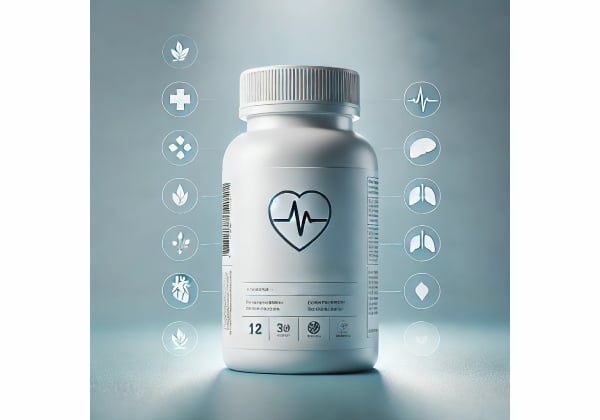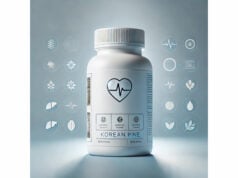
Kukui nut oil—pressed from the seeds of the kukui (candlenut) tree Aleurites moluccanus—is a lightweight, fast-absorbing botanical oil prized across the Pacific for soothing, softening, and replenishing skin and hair. Thanks to a naturally high content of unsaturated fatty acids and protective phytochemicals, kukui oil can support a healthy skin barrier, calm visible dryness, and add shine without a greasy feel. It layers well under sunscreen and makeup, doubles as a nourishing scalp or cuticle treatment, and blends smoothly with other carrier oils or essential oils in DIY formulas. While the tree’s roasted seed has culinary uses in traditional cuisines, ingesting raw or concentrated products is unsafe; modern use of kukui oil is overwhelmingly topical. Below, you’ll find a practical, evidence-aligned guide to what kukui oil can (and cannot) do, how to choose and apply it, realistic timelines for results, and the safety factors to weigh before adding it to your routine.
Quick Overview
- Helps replenish the skin barrier and reduce visible dryness when used 1–2 times daily.
- Lightweight emollient for hair ends and scalp care; improves softness and shine with a few drops per use.
- Start with 3–6 drops for face or 0.5–1 mL for body areas; in blends, use 10–50% kukui oil depending on texture goals.
- Avoid oral ingestion; candlenut products taken by mouth have been linked to adverse effects in animals and humans.
- Do not use if you have known allergy to Aleurites (candlenut) or if you’ve reacted to nut or seed oils previously.
Table of Contents
- What is kukui nut oil?
- Does it really help skin?
- How to use it right
- Formulation and choosing a quality oil
- Safety and who should avoid it
- Evidence at a glance
What is kukui nut oil?
Kukui nut oil is a cold-pressed fixed oil expressed from the seeds of Aleurites moluccanus, a broadleaf tree native to maritime Southeast Asia and widely cultivated across Polynesia and Hawaii. Historically, the plant served many roles—from ceremonial lighting (hence “candlenut”) to wood finishing and topical skin care. In modern personal care, kukui oil is valued as a fast-absorbing emollient that softens, smooths, and helps reduce transepidermal water loss (TEWL), the process by which the skin loses moisture to the environment.
What’s in it? Like many seed oils, kukui oil contains a mixture of fatty acids bound in triglycerides plus minor compounds such as tocopherols (vitamin E family), phytosterols, and polyphenols. Its fatty acid profile varies by cultivar, region, and processing. Generally, kukui oil is rich in polyunsaturated fatty acids (PUFAs)—notably linoleic acid (omega-6) and alpha-linolenic acid (omega-3)—with additional oleic (omega-9) and smaller amounts of saturated fats (palmitic, stearic). This composition explains much of its light slip and quick dry-down on skin. In some analyses, trans-isomers may appear depending on processing or analytical methodology; reputable suppliers control for quality to preserve a favorable profile.
Texture and finish. Compared with heavier emollients (e.g., olive or avocado oil), kukui oil feels lighter, penetrates rapidly, and leaves a satin—not glossy—finish. That makes it appealing for face oils, daytime layering, and scalp care where residue is a concern. It also mixes easily with esters (like isopropyl myristate) and other carriers to dial in either a drier or richer after-feel.
Topical goals. Common aims include supporting a supple barrier, easing the look of flakiness or tightness, conditioning hair lengths, softening cuticles, and improving the glide of massage blends. Because kukui oil is unscented to mildly nutty, it’s a friendly base for aromatherapy blends (with appropriate dilution of essential oils).
What it is not. Kukui nut oil is not a cure for inflammatory skin diseases, nor is it a substitute for sunscreen, prescription treatments, or doctor-directed care. It is also not recommended for ingestion; candlenut products taken by mouth have been associated with gastrointestinal and hepatic adverse events in reports and preclinical experiments.
Who uses it? It’s suited to normal, combination, and dry skin types; oily or acne-prone users may also tolerate it well due to its linoleic-leaning profile, especially when used sparingly. For hair, it benefits coarse, wavy, curly, or chemically treated strands that need slip without heavy build-up.
Does it really help skin?
Barrier support is the core benefit. The outermost layer of the skin (the stratum corneum) functions like a brick-and-mortar wall: corneocytes (bricks) embedded in a lipid matrix (mortar) composed of ceramides, cholesterol, and fatty acids. When the mortar thins—due to harsh cleansers, cold weather, low humidity, or over-exfoliation—skin loses water more quickly and feels rough or tight. Topical plant oils can help in two complementary ways:
- Occlusion and emolliency: They form a breathable film that slows water loss, immediately softening texture.
- Lipid replenishment: Oils richer in essential fatty acids (like linoleic acid) may contribute substrates the skin can use to rebuild barrier lipids, supporting smoother, more even function over time.
Where kukui oil fits. As a lightly occlusive, linoleic-forward oil, kukui can reduce the sensation of dryness within minutes and, with regular use, contribute to a more resilient barrier. This is particularly helpful after bathing or handwashing when skin’s water content temporarily spikes—sealing in that water with a thin oil layer yields a lasting plump effect. On the face, a few drops can improve makeup glide and reduce the appearance of dry patches along the nose and cheeks.
Signs of benefit to look for.
- After 1–3 uses: less tightness or itch related to dryness, improved slip, a soft satin finish without obvious shine.
- After 2–4 weeks of daily use: fewer rough areas, reduced visible flaking, a more even feel after cleansing, and hair ends that tangle less and snap less on brushing.
- On the scalp: better comfort in dry, low-humidity conditions; easier parting and less static.
What about sensitive or inflammatory skin? Reviews of plant oils in dermatology note that certain oils (particularly those higher in linoleic acid) can be compatible with dry, eczematous, and psoriasis-prone skin when used as emollient adjuncts to standard care. Kukui oil has appeared alongside other traditional oils in surveys of complementary approaches for psoriasis and dermatitis. While encouraging, these data are not head-to-head drug trials; outcomes vary, and medical therapy remains first-line for active disease. If you have a diagnosed skin condition, treat kukui oil as a supportive moisturizer rather than a replacement for prescribed treatment.
Hair and scalp. On hair fibers, kukui oil functions primarily as a surface conditioner. A drop or two combed through mid-lengths to ends can reduce frizz, enhance shine, and improve slip, lowering mechanical damage during detangling. For very dry scalps, massaging a small amount before shampooing can reduce post-wash tightness. Because it’s light, build-up is less likely compared with heavier butters, provided you keep amounts minimal.
Where results may disappoint. Kukui oil does not lighten hyperpigmentation, treat acne by itself, or remove sebaceous filaments. It can be compatible with acne routines when used judiciously, but you’ll still need active ingredients (e.g., retinoids, benzoyl peroxide, azelaic acid) per your clinician’s guidance.
How to use it right
Face and body application
- Prep: Cleanse gently; on the body, apply after a lukewarm shower when skin is slightly damp.
- Dose: For the face, start with 3–6 drops (~0.1–0.2 mL). For localized body areas (hands, elbows, shins), use 0.5–1 mL. Adjust by season and humidity.
- Method: Warm the oil between palms and press over damp skin. For very dry areas, apply over a humectant serum or light lotion to trap more water.
- Frequency: 1–2 times daily for dry skin, as needed for normal/combo skin.
Scalp and hair
- Pre-wash scalp comfort: Massage 0.5–1 mL into the scalp for 5–10 minutes, then shampoo.
- Leave-in for ends: Rub 1–3 drops between hands and smooth over mid-lengths to ends on damp or dry hair.
- Mask blend (optional): Mix 1 part kukui oil with 1 part conditioner; apply to lengths for 10–15 minutes, then rinse.
Blending and dilution
- With essential oils: Keep total essential oils at ≤1% for face (≈3 drops per 10 mL of carrier) and ≤2% for body unless otherwise directed by a qualified professional.
- With other carriers: For a lighter, drier feel, blend kukui with esters (e.g., C12–15 alkyl benzoate) or squalane. For richer slip, add avocado or meadowfoam.
- Typical range in DIY or small-batch formulas: 10–50% kukui oil of total oil phase (10–20% in face serums; 30–50% in body oils).
Layering tips
- AM: After water-based serum, before sunscreen and makeup.
- PM: After retinoids or acids have dried, press a thin film of kukui oil to reduce transient dryness.
- Humid vs. arid climates: In humid climates, reduce amount; in very dry settings, pair with a ceramide lotion underneath and consider a balm on hot spots.
Storage and shelf life
- Because kukui oil is PUFA-rich, it oxidizes faster than saturated oils. Store tightly capped in an amber bottle, away from heat and light.
- Shelf life after opening: 6–12 months under good storage; refrigeration can extend stability. Discard if the smell turns sharp or paint-like, or if the oil darkens markedly.
Patch testing
- Apply a small amount to the inner forearm twice daily for 3 days. If no redness, itch, or bumps occur, proceed to regular use. Pause during active dermatitis flares and speak with your clinician before re-introducing.
Formulation and choosing a quality oil
Labels to prioritize
- “Cold-pressed,” “unrefined,” or “virgin.” These indicate mechanical extraction at low heat, which preserves natural antioxidants and the characteristic light texture. A mild nutty aroma is normal for unrefined oil.
- Country/region of origin and batch testing. Reputable brands disclose origin, peroxide value, acid value, and sometimes fatty acid distribution—useful markers for freshness and authenticity.
- Packaging: Amber or opaque bottles minimize light exposure. A pump or reducer dropper limits air ingress and accidental over-pouring.
Refined vs. unrefined
- Unrefined: More micronutrients, slightly shorter shelf life, mild natural scent, golden hue. Good for face/body oils if you enjoy a subtle aroma.
- Refined: Neutral scent and color, slightly longer stability, still emollient but fewer trace compounds. Suitable for sensitive noses, hair care, or when you want the oil to “disappear” under fragrance.
Texture tuning in blends
- Drier slip (fastest dry-down): Kukui + squalane or lightweight esters (e.g., 70:30).
- Balanced daily serum: Kukui + jojoba + rosehip (roughly 40:30:30).
- Body oil for very dry skin: Kukui + avocado + a small amount of occlusive balm layered on top as needed.
Compatibility with actives
- Retinoids/retinals: Kukui can buffer dryness without impeding absorption when applied after the active has set.
- Vitamin C (ascorbic acid) serums: Use C first, allow to dry, then press kukui oil to limit stickiness.
- Acids (AHA/BHA/PHA): Same logic as vitamin C; kukui helps with post-acid tightness.
- Niacinamide, azelaic acid: No known conflicts; layering for comfort is fine.
Quality red flags
- Rancid or sharp odor; sticky or tacky feel; unusually dark color for an unrefined oil; unlabeled extraction method; lack of batch or expiry date.
- Suspiciously low price for “virgin” oil; inconsistent texture bottle to bottle; white flakes or clouding at room temperature (can indicate contamination or waxes—though harmless clouding may occur if refrigerated and should clear at room temp).
Environmental note
- Kukui trees are widely cultivated; seek suppliers that document responsible sourcing. Because the oil is potent at small doses, a little goes a long way—prioritize minimal-waste packaging and use up what you buy within its freshness window.
Safety and who should avoid it
Topical safety snapshot
- For most people, kukui oil used on intact skin is well tolerated. As with any botanical, allergic contact dermatitis is possible. Start with a patch test and introduce slowly if you have reactive skin.
- Avoid applying to open wounds, infected or oozing skin unless directed by a clinician.
- Unscented kukui oil is generally milder than essential-oil–heavy blends; if you’re sensitive to fragrance, choose fragrance-free products.
Ingestion is not recommended
- Candlenut products taken by mouth have been linked to gastrointestinal upset (nausea, vomiting, diarrhea) and potential liver stress in preclinical studies. Human case reports describe adverse effects with oral use of candlenut for weight loss. Modern consumer guidance limits kukui oil to topical use unless a food-grade product is explicitly intended and approved in your region; even then, medical consultation is prudent.
Who should avoid or take extra care
- Known allergies to Aleurites moluccanus (candlenut) or previous reactions to nut/seed oils.
- Chronic skin conditions under active treatment (e.g., moderate-to-severe eczema, psoriasis): use only as an adjunct moisturizer within a clinician-guided plan.
- Pregnancy and breastfeeding: Topical use of plain kukui oil on intact skin is generally considered low risk; avoid oral intake and avoid essential-oil additives unless specifically cleared by your clinician.
- Infants: For baby skin, simple occlusives (petrolatum, mineral oil) often have the best evidence base; if you try kukui oil, keep amounts tiny and discontinue at any sign of irritation.
Interactions and product hygiene
- No known drug interactions with topical kukui oil. If adding essential oils, check for medication interactions specific to those essential oils.
- Keep the dropper tip clean. Don’t touch droppers to the skin, and don’t add water to the bottle. If contamination is suspected (odor change, cloudiness that doesn’t resolve), discard.
Overuse signs
- Greasy feel that doesn’t absorb within a few minutes (use less).
- New breakouts or closed comedones after starting—pause, reintroduce at lower amounts, or switch to a different carrier with a similar feel (e.g., squalane).
- Persistent redness or itch—stop use and seek advice.
Evidence at a glance
What the lab and clinical literature suggest
- Composition and rationale: Analyses of Aleurites moluccanus seed material document a PUFA-rich profile with notable unsaturated fatty acids. That biochemical profile aligns with the oil’s light feel and emollient performance on skin.
- Adjunct use in inflammatory dermatoses: Reviews of complementary approaches in psoriasis mention traditional plant oils—including kukui—used as emollient adjuncts. While not a substitute for medical therapy, emollients can reduce dryness and improve comfort alongside standard regimens.
- Oral safety concerns (do not ingest): Experimental work administering candlenut seed orally to animals has reported both metabolic changes and dose-related hepatic stress. Broader poisonous-plant reviews also list Aleurites species among plants associated with gastrointestinal toxicity when ingested. This underpins the recommendation to limit kukui oil to topical use.
- Takeaway: For skin and hair, kukui oil is best positioned as a topical emollient—a comfort booster and barrier helper rather than a treatment for disease. Its benefits are practical and cosmetic; its risks are low with sensible topical use, but ingestion is not advised.
Practical timelines
- Immediate (minutes): Softer feel, better slip, reduced tightness after washing.
- Short term (1–2 weeks): Smoother texture, fewer flaky patches, hair with improved manageability.
- Ongoing (4+ weeks): More consistent comfort in low-humidity conditions; easier maintenance with smaller doses.
When to seek medical advice
- If you have persistent itch, thick scaling plaques, widespread dermatitis, or any lesion that changes, bleeds, or doesn’t heal, consult a clinician. Emollients can soothe, but they should not delay evaluation of active or worsening disease.
References
- Fatty acids composition and in vivo biochemical effects of Aleurites moluccana seed (Candlenut) in obese wistar rats 2022 (Experimental Study)
- Herbal Therapy for Dermatologic Disorders in the U.S. 2017 (Review)
- Most Poisonous Plants in the World: A Comprehensive Review 2025 (Review)
- Chemical composition of kernel oils from Calophyllum inophyllum L. and Aleurites moluccana (L.) Willd 2011 (Composition Study)
Disclaimer
This guide is for educational purposes and is not a substitute for personalized medical advice, diagnosis, or treatment. Always talk with a qualified health professional about any skin condition, new supplement, or change to your care plan—especially if you are pregnant, breastfeeding, managing chronic illness, or using prescription medications.
If you found this helpful, consider sharing it with friends or on your favorite platforms such as Facebook or X, and follow us for more evidence-informed guides. Your support helps us continue creating quality, reader-first content.










